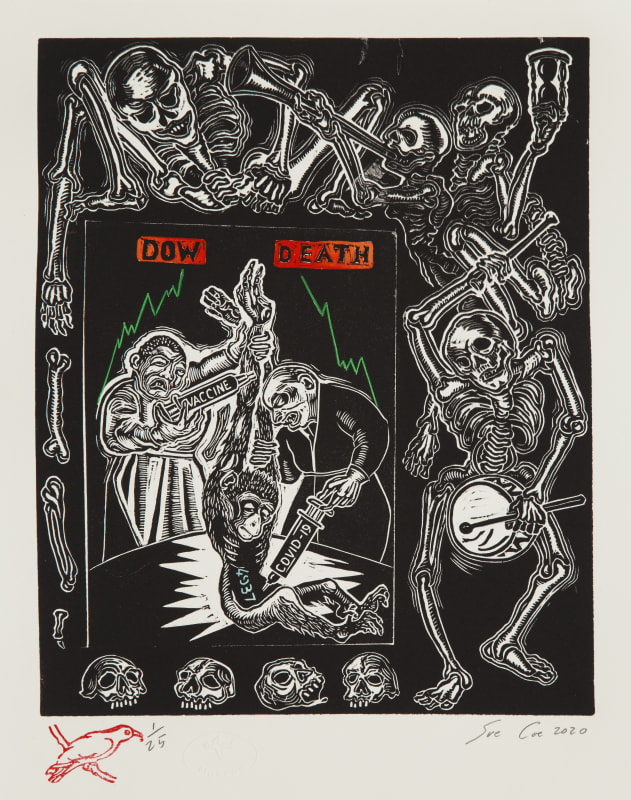Lauren O’Neill-Butler on Sue Coe’s ominous rallying cries
“THIS IS THE BELLY OF THE PROVERBIAL BEAST, and apologies to all beasts: a culture tearing at its economic seams.” That was Sue Coe in 2018, during a video interview for artforum.com. I had asked her about current conditions in the United States—and about this feeling I had of the ground falling away beneath me. Two years later, those seams have ripped wide open, and Coe has responded with characteristic intensity. For more than four decades, her art has raged for animal rights and social justice—for the “people on the front lines,” as she put it to me. Her signature high-contrast output has long followed the logic of the multiple: Take, copy, distribute. Lately, she has produced prints about the relationship among wet markets, disease, human violence, and capitalism. The four hand-colored linocuts she made for this portfolio mobilize many legacies of political printmaking, from the artists whose works took on racism during the Great Depression, including Elizabeth Olds and Hale Woodruff, to Käthe Kollwitz’s melancholic “Death” print cycle of 1934–37 to José Guadalupe Posada’s early-twentieth-century lithographs of menacing calaveras. Here, a band of skeletons frame neoliberal maladies that occupy Coe’s mind: the tedious QAnon conspiracy theories; Trump’s assaults on the United States Postal Service; the murder of countless “lab” animals in the race to a Covid-19 vaccine; and those particular objects of her disgust, slaughterhouses, aka “essential” workplaces. These are potent omens of Earth’s demise—and begetters of a powerful rallying cry. As the empty hourglass in the upper-right-hand corner suggests, time’s up.
